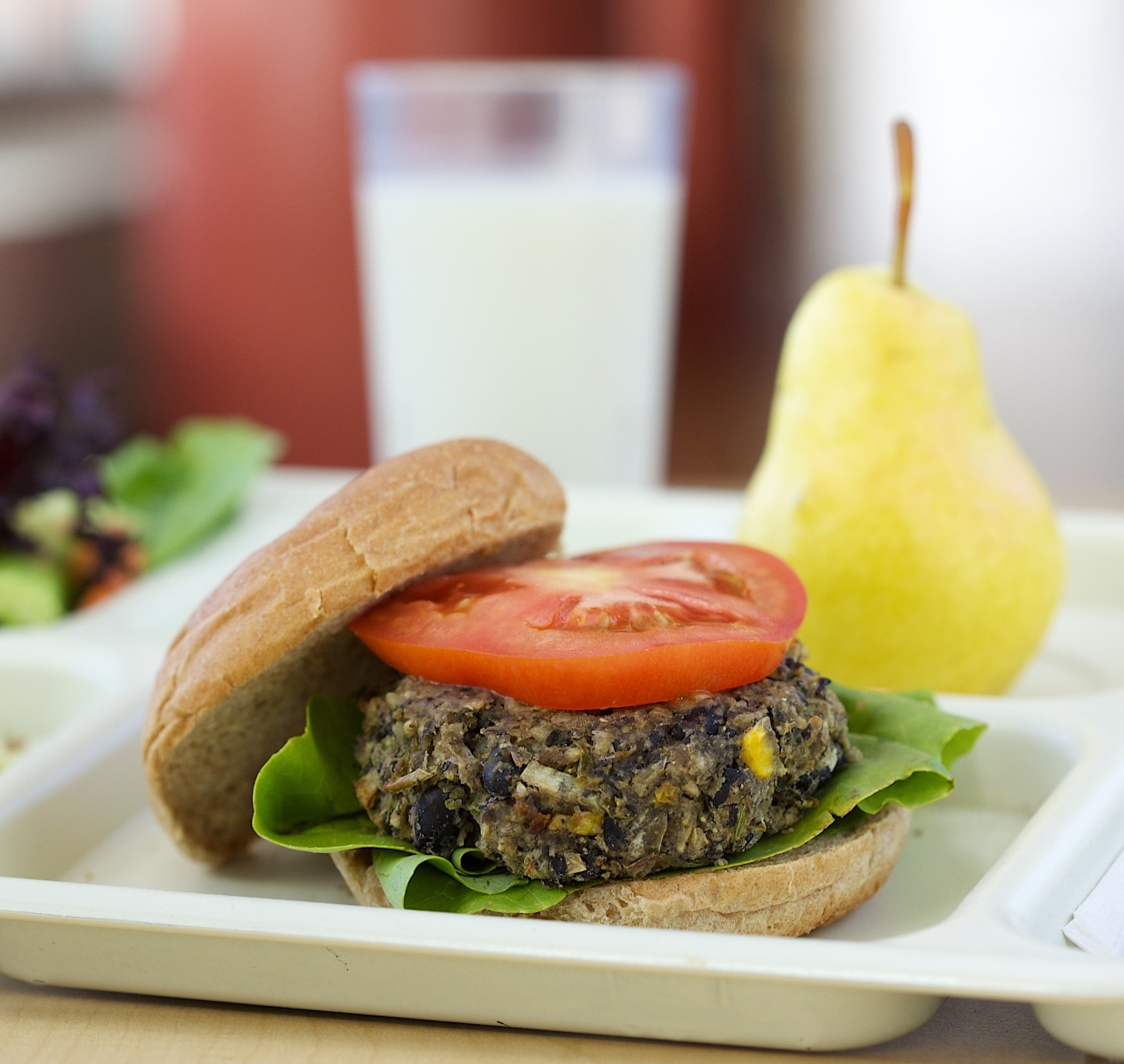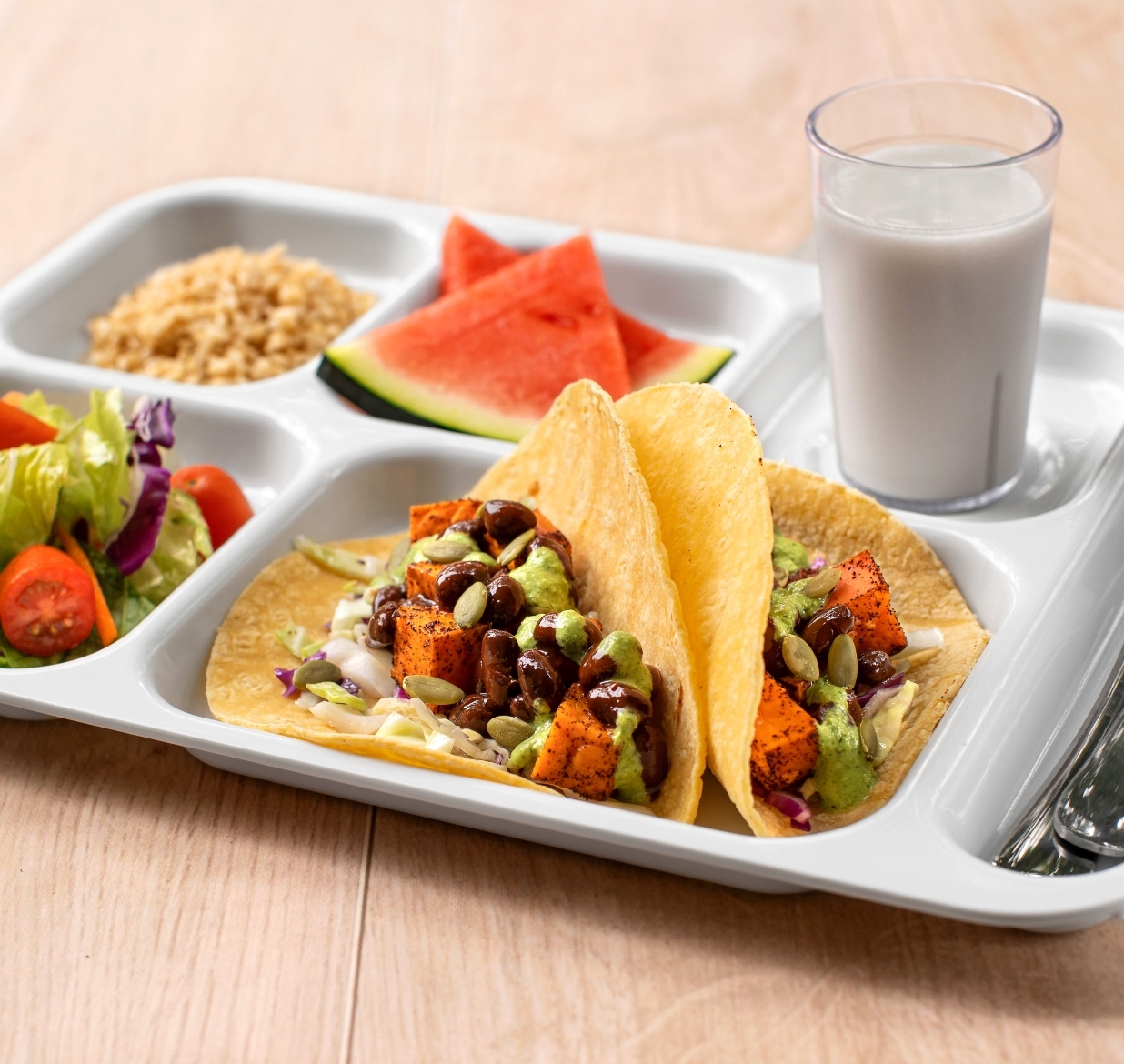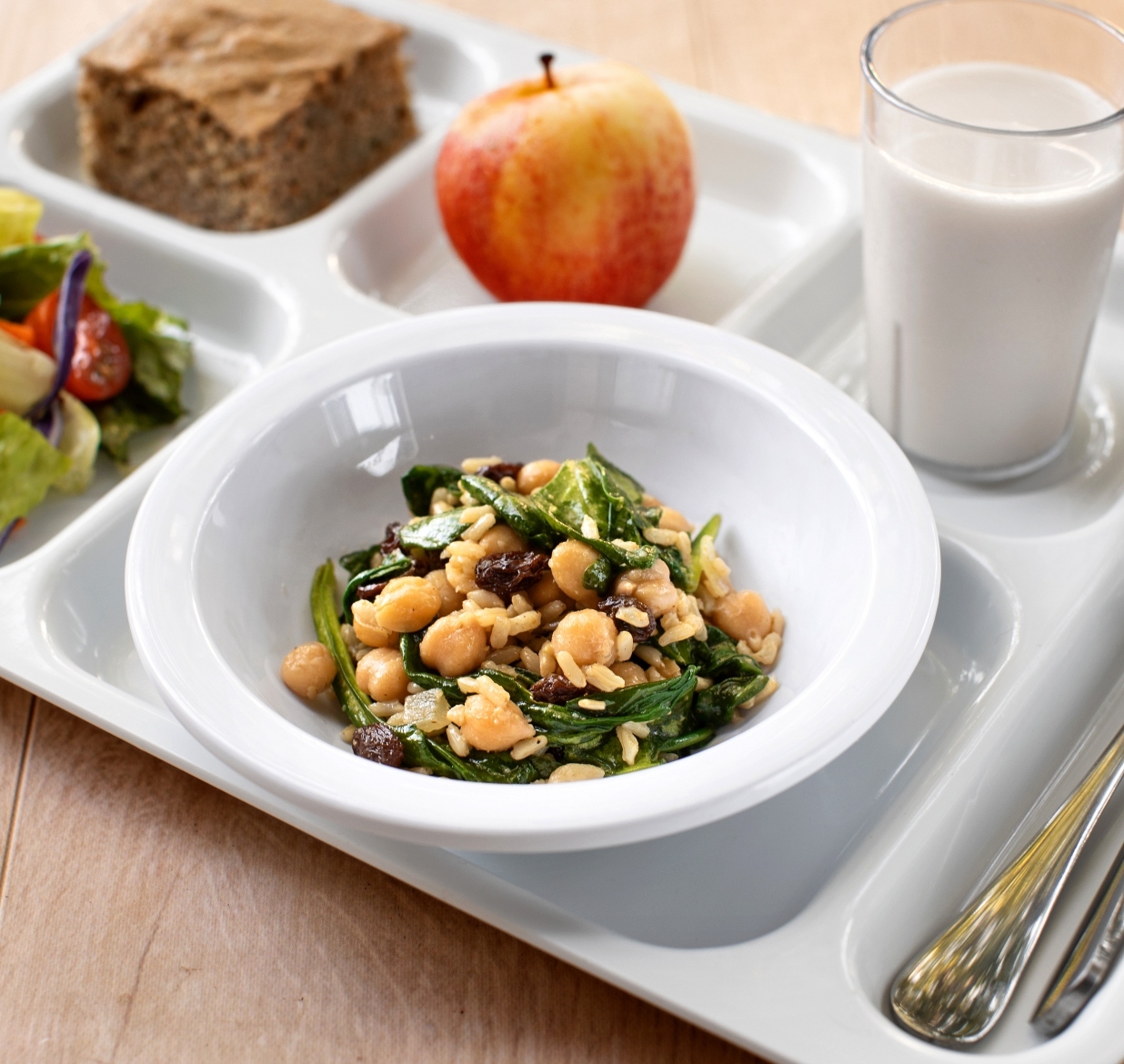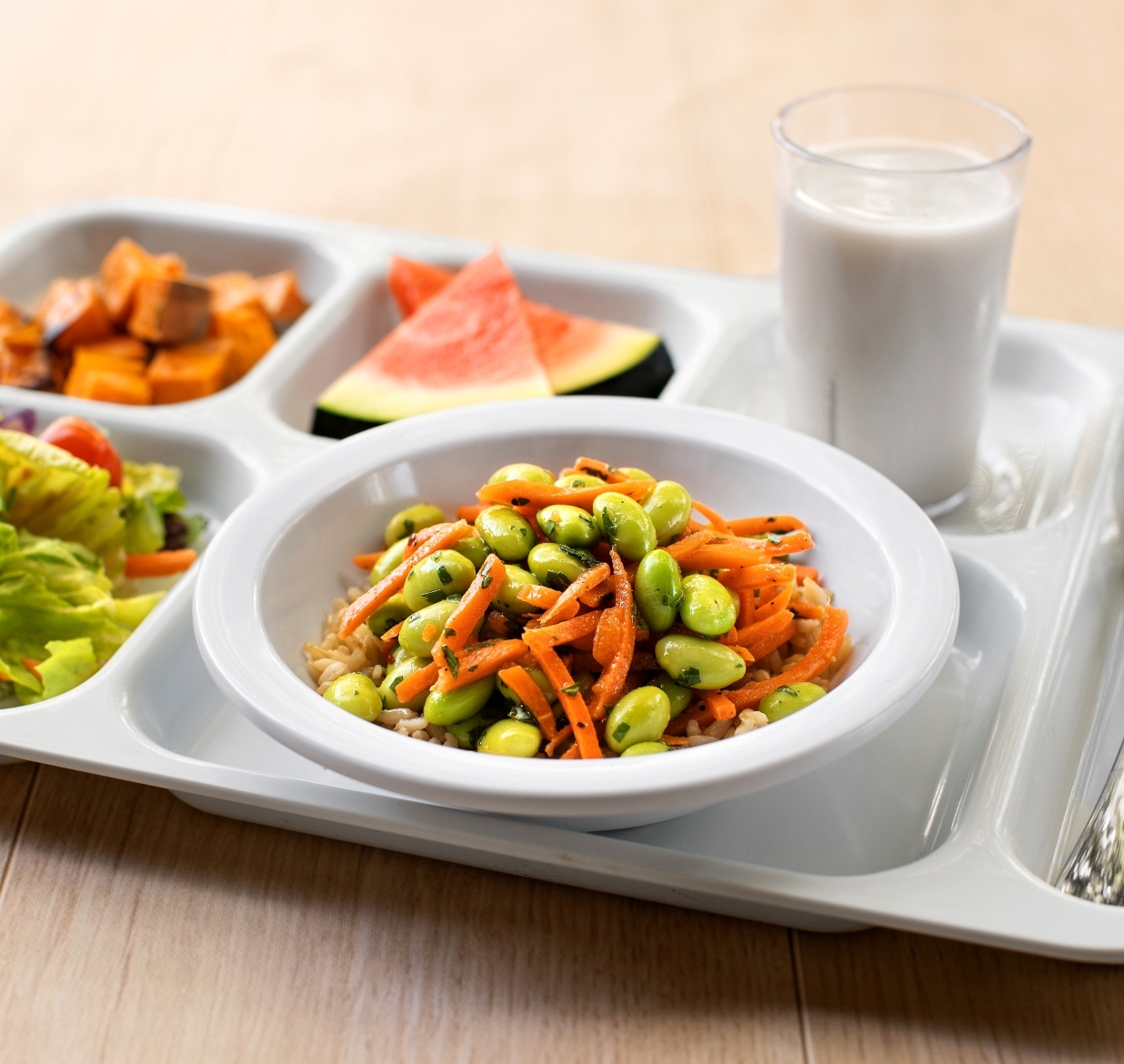
Beans for a Healthier Lunch Tray & Planet
April 18, 2023 | By Imari Whalen
This Earth Month, we’re celebrating how a small yet mighty ingredient can drive lasting change in the school kitchen, cafeteria, and beyond: beans!
The cafeteria can be the largest classroom on campus, where students have the opportunity to learn about healthy and sustainable food choices and their impact on the environment. In recent years K-12 students have expressed a growing interest in eating delicious climate-friendly meals, encouraging many school food programs to add plant-forward options to their menu cycles (Food Service Director). With 33 million students participating in the National School Lunch Program (NSLP) annually, school food programs play a major role in the well-being of our future generations and the planet by adopting sustainable procurement practices and serving meals that feature eco-friendly ingredients. This Earth Month, we’re celebrating how a small yet mighty ingredient can drive lasting changes in the school kitchen, cafeteria, and beyond: beans!
In 2022, we joined the Beans is How Bean Coalition as a Founding Partner. Beans is How is a campaign mobilized by the SDG2 Advocacy Hub to support a more sustainable and resilient planet by “doubling the global consumption of beans, (as well as peas, lentils and other pulses and legumes) by 2028.” According to Beans is How, beans release 90% less harmful greenhouse gasses into the atmosphere than some animal proteins. In addition to being climate-friendly, the legume family is an excellent source of protein, carbohydrates, vitamins, and minerals. Luckily for school food programs, beans and legumes are often affordable and can be readily purchased either as dry, canned or jarred goods.
Under the U.S. Department of Agriculture’s (USDA) meal patterns, beans and legumes offer a unique advantage as they can be credited as either a meat/meat alternative meal component or as a vegetable component of NSLP and School Breakfast Program meals. In addition to being a sustainable and nutrient-rich ingredient, beans play a central role in many global cuisines, presenting the opportunity for school food professionals to prepare them as delicious, culturally-relevant meals for students. Furthermore, beans and legumes are budget friendly and an inexpensive alternative to the protein category. Read on to learn about four of our favorite kid-approved school food recipes from The Lunch Box that feature beans and legumes:
Black Bean Veggie Burger
Our Black Bean Veggie Burger is a fantastic choice for school food professionals who are in the initial stages of introducing scratch-cooked, plant-forward meals to their menus. Made with black beans, onions, green peppers, and jalapeños, these delicious vegetarian patties can be served with your typical burger fixings to create a delectable twist on a classic school lunch. For school food professionals looking to save time, the patties can be frozen for up to one week before serving. According to Beans is How, black beans have a very low carbon footprint, making this recipe a win for students and the environment alike!


Black Bean Veggie Burger
Our Black Bean Veggie Burger is a fantastic choice for school food professionals who are in the initial stages of introducing scratch-cooked, plant-forward meals to their menus. Made with black beans, onions, green peppers, and jalapeños, these delicious vegetarian patties can be served with your typical burger fixings to create a delectable twist on a classic school lunch. For school food professionals looking to save time, the patties can be frozen for up to one week before serving. According to Beans is How, black beans have a very low carbon footprint, making this recipe a win for students and the environment alike!

Black Bean and Sweet Potato Tacos
Another flavorful black bean recipe is our Black Bean and Sweet Potato Taco recipe. This recipe is great for school food professionals who are looking to save time by cooking with canned black beans. Infused with ancho chili powder and cumin, the hearty black bean and sweet potato taco filling is not only delicious, but also an excellent source of fiber and protein. These colorful tacos can be served with an array of delectable plant forward toppings, such as a delicious cabbage and lime juice slaw. To further their environmental impact, school food professionals can reach out to local vendors and procure fresh produce and tortillas for these tasty tacos!

Black Bean and Sweet Potato Tacos
Another flavorful black bean recipe is our Black Bean and Sweet Potato Taco recipe. This recipe is great for school food professionals who are looking to save time by cooking with canned black beans. Infused with ancho chili powder and cumin, the hearty black bean and sweet potato taco filling is not only delicious, but also an excellent source of fiber and protein. These colorful tacos can be served with an array of delectable plant forward toppings, such as a delicious cabbage and lime juice slaw. To further their environmental impact, school food professionals can reach out to local vendors and procure fresh produce and tortillas for these tasty tacos!
Chickpea, Rice and Spinach Pilaf
Our Chickpea, Rice, and Spinach Pilaf was developed as part of our Indigenous Recipes Project with the Rocky Mountain Tribal Leaders Council and presents an elevated twist on one of the most commonly enjoyed food combos: rice and beans. This meal combines chickpeas, brown rice, yellow onions, and spinach with cumin, coriander, salt, and pepper to create an aromatic lunchtime meal. The star of the show, chickpeas, are a great substitute for meat protein as they have a high protein content of 23%. Furthermore, chickpeas are great for the planet as they enrich the soil for nearby crops through a process called nitrogen fixation (Beans is How). Sharing fun facts and resources about plant forward ingredients with students is a great way to help them understand what goes into growing the food that ends up on their plates all year round!


Chickpea, Rice and Spinach Pilaf
Our Chickpea, Rice, and Spinach Pilaf was developed as part of our Indigenous Recipes Project with the Rocky Mountain Tribal Leaders Council and presents an elevated twist on one of the most commonly enjoyed food combos: rice and beans. This meal combines chickpeas, brown rice, yellow onions, and spinach with cumin, coriander, salt, and pepper to create an aromatic lunchtime meal. The star of the show, chickpeas, are a great substitute for meat protein as they have a high protein content of 23%. Furthermore, chickpeas are great for the planet as they enrich the soil for nearby crops through a process called nitrogen fixation (Beans is How). Sharing fun facts and resources about plant forward ingredients with students is a great way to help them understand what goes into growing the food that ends up on their plates all year round!

Edamame Carrot Salad
Our vibrant Edamame Carrot Salad is a refreshing dish for students to enjoy, especially during the warmer months. In addition to being packed with flavor, this salad is full of protein and other key nutrients. Did you know that one cup of edamame beans provides nearly 10% of an adult’s daily calcium and vitamin C intake? The same amount of edamame also provides nearly one-third of our daily protein intake (Beans is How).

Edamame Carrot Salad
Our vibrant Edamame Carrot Salad is a refreshing dish for students to enjoy, especially during the warmer months. In addition to being packed with flavor, this salad is full of protein and other key nutrients. Did you know that one cup of edamame beans provides nearly 10% of an adult’s daily calcium and vitamin C intake? The same amount of edamame also provides nearly one-third of our daily protein intake (Beans is How).
Fueling the Future
At the Chef Ann Foundation, we believe sustainable, whole-ingredient scratch cooking is at the core of supporting the health of our future generations and planet. Plant forward ingredients, like beans, are an important part of school meals as they are rich in nutrients, fiber, and protein to support growing students. These ingredients also support the health of our planet as they often use fewer resources, such as water and energy, to produce than animal proteins.
We’re excited to support Beans is How and encourage more school food programs to incorporate delicious bean recipes into their menu cycles. We hope this Earth Month inspires you to explore how beans can be used in delicious, culturally-relevant meals that positively impact students and the environment. Together, we can drive impactful changes with flavorful, plantet-friendly school meals!
To learn more about Beans is How and their Bean Coalition, visit their website here.





